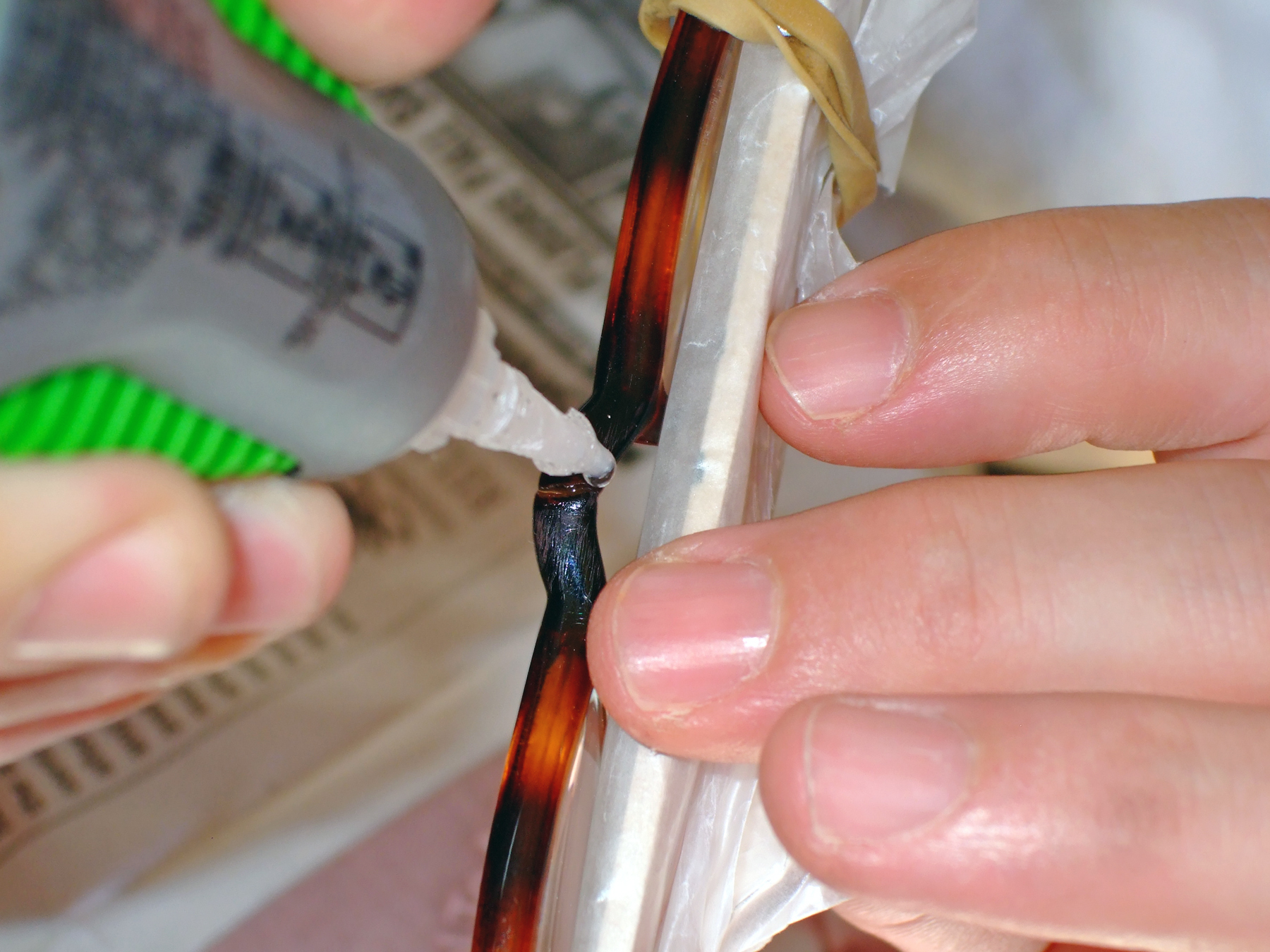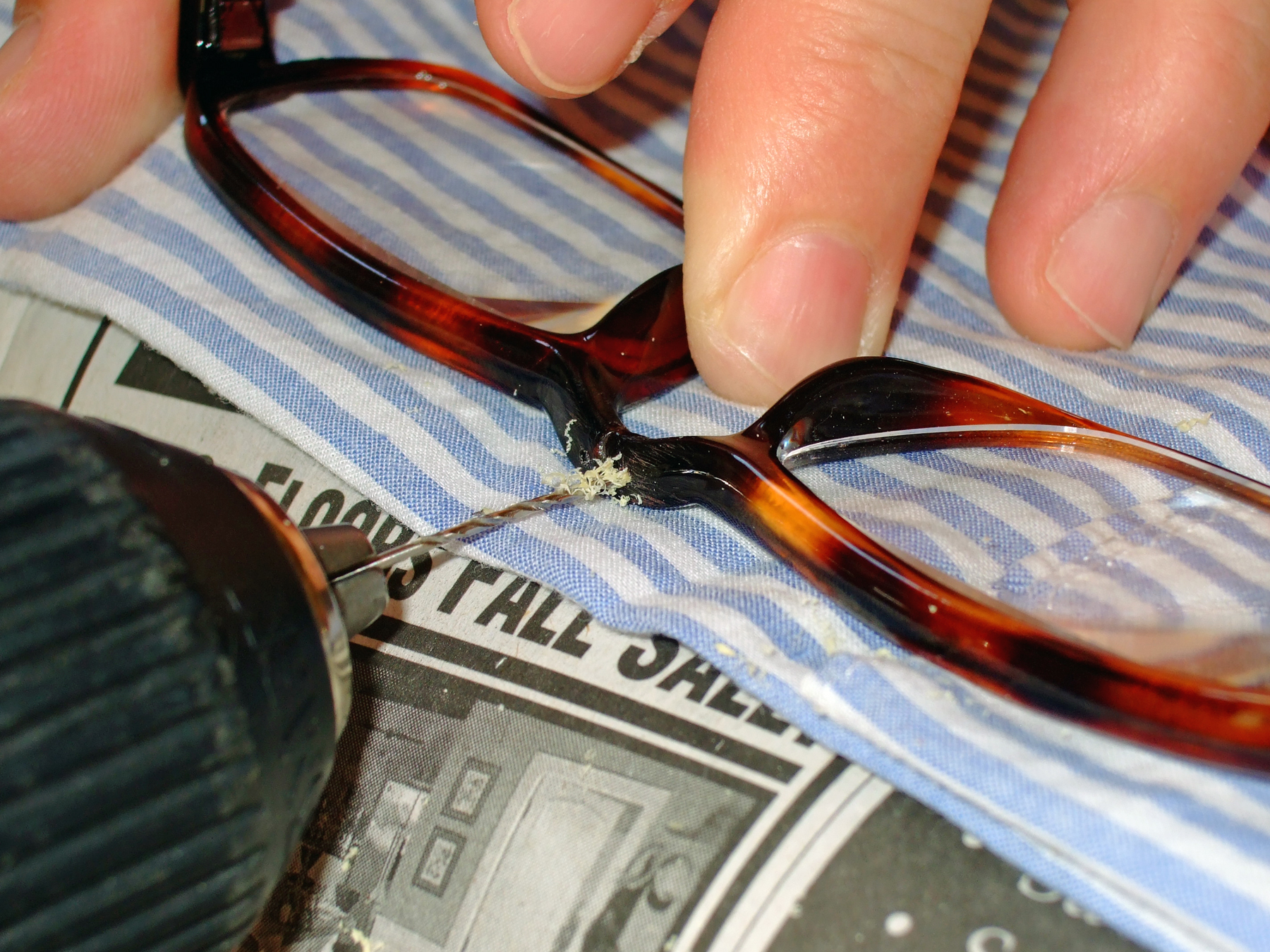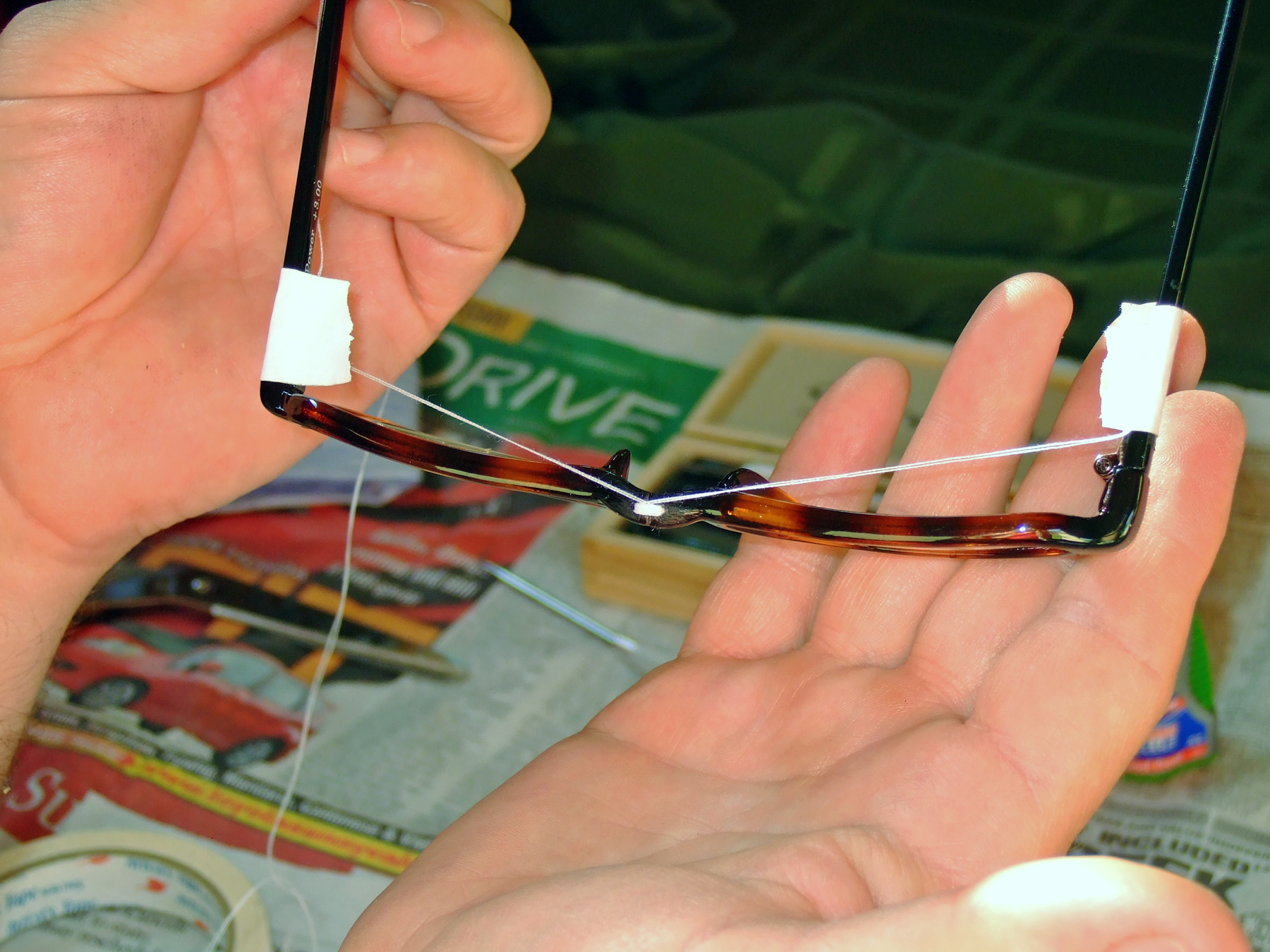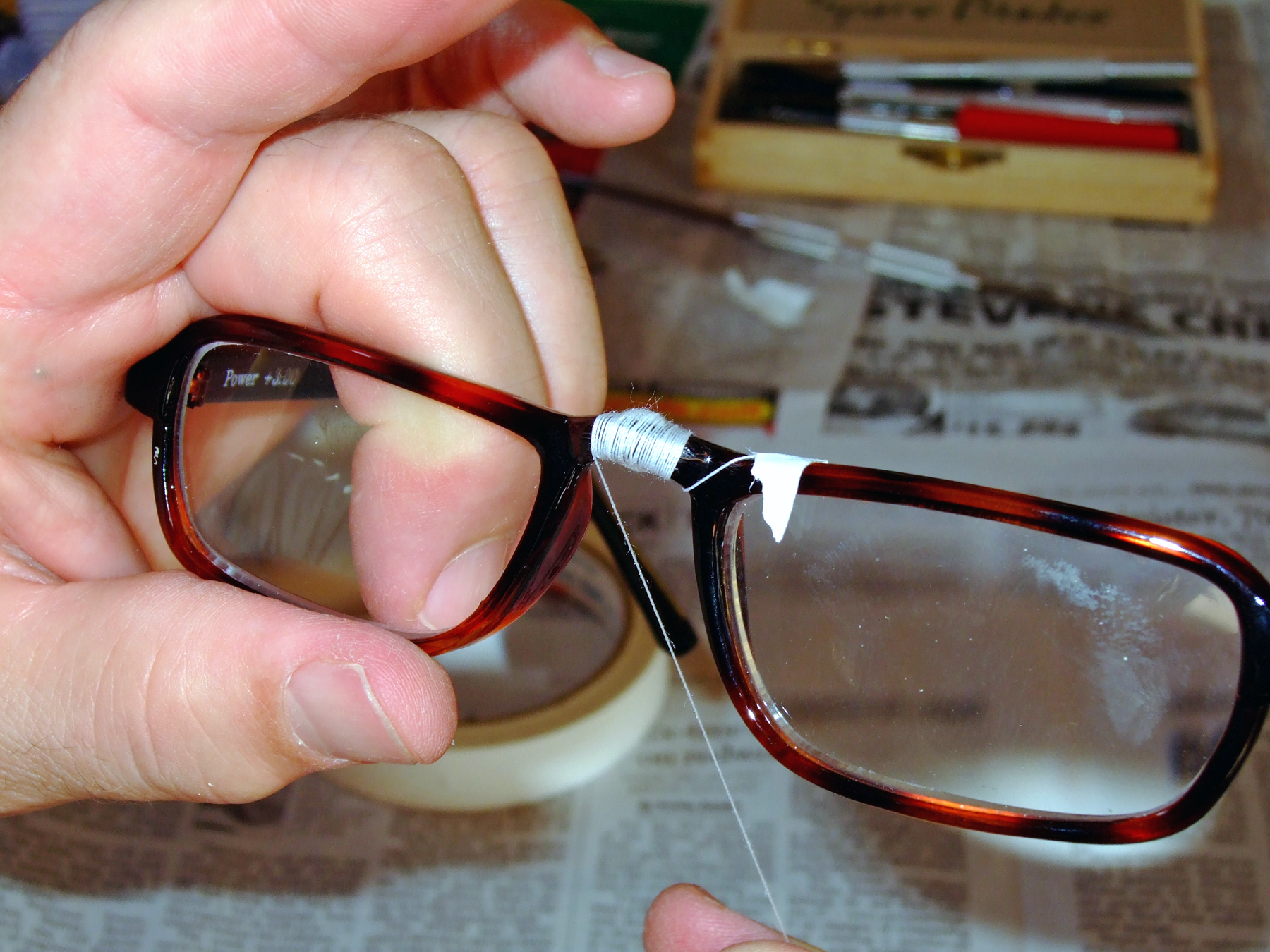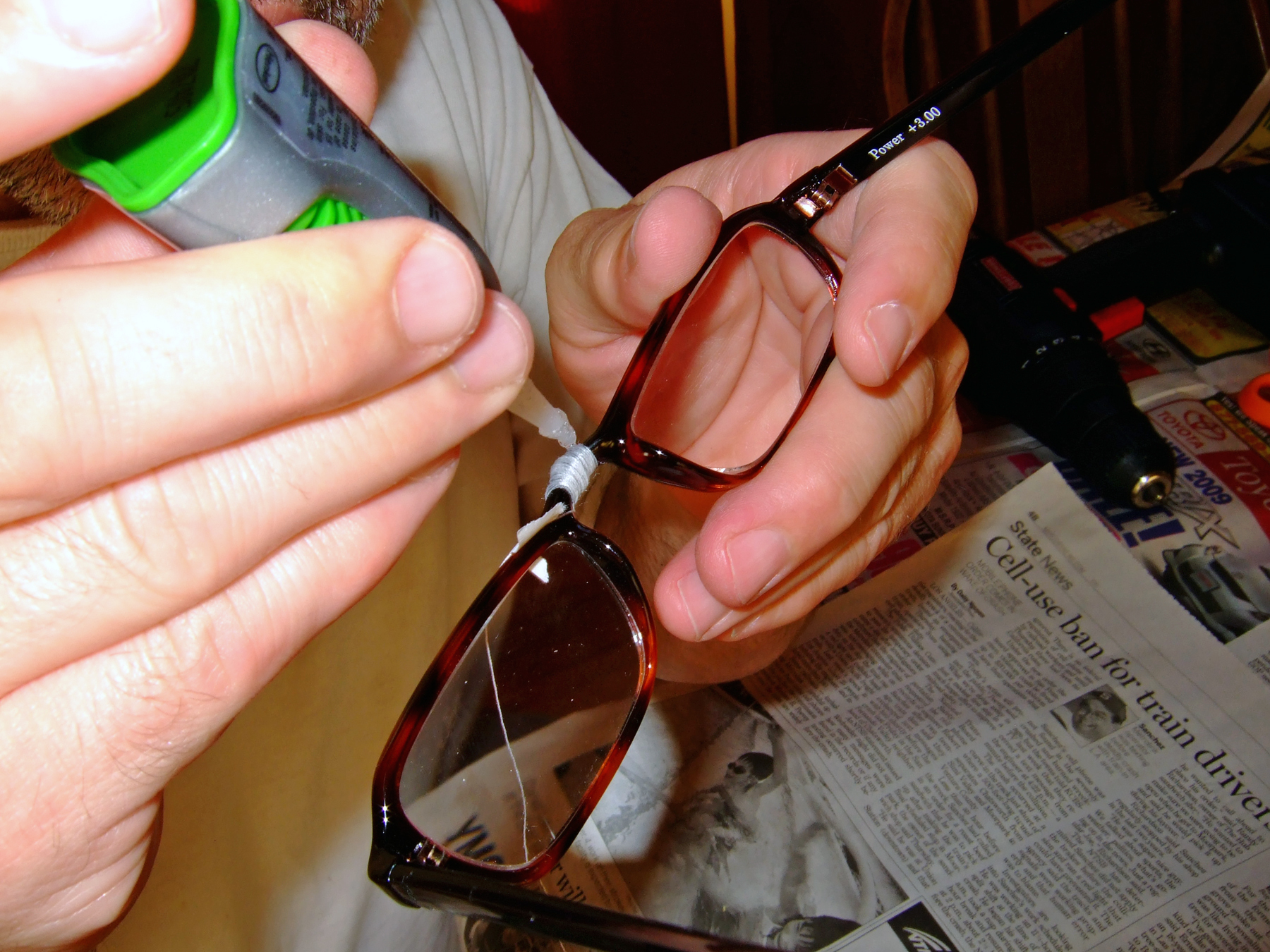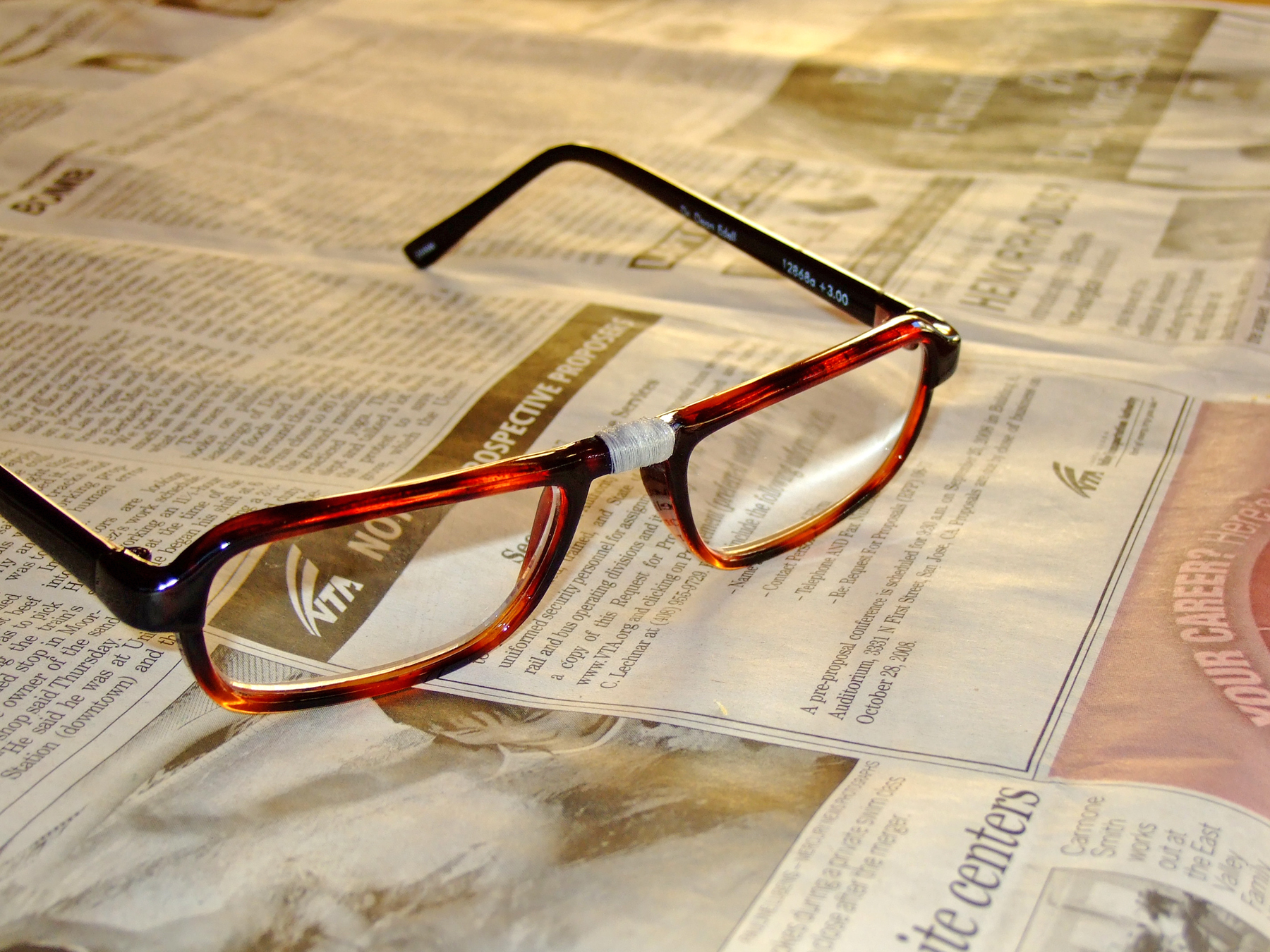You’ve got some eyeglasses, plastic frames, broken. On the internet you found a repair place. In two weeks you can get them fixed. But what if you can’t wait?
Follow along and fix your glasses at home — the only special tool you need is a commonly available small-gauge drill bit. If you’re willing to take a risk and trust in your skills, you can have your glasses fixed as soon as tomorrow!
Tips on gluing:
The secret to good gluing technique is the Three Cs:
- Cleaning: Surfaces should be clean and dry with a matte texture. The glue needs a solid, clean surface with a little “tooth” to bond to.
- Clamping: Hold the parts steady while the glue sets, or the bond will be weakened.
- Curing: Give the glue time to set. If you strain the bond before it’s fully set, it will be weaker.
So, to sum up: Clean the joint, clamp it firmly, and let the glue cure, and you’ll have good results.





